Growth Stages Of Passion Fruit
Renowned as symbols of mystery and temptation since Victorian times, passion fruit’s allure spans intricate flowers, alien-egg shaped fruits and divine tropical flavor delighting palates worldwide. Luckily passionate gardeners living across U.S.
Hardiness Zones 10-11 can cultivate ornamental and edible Passiflora vines alongside favorably warm climates like Australia, New Zealand, and western South American regions ideal for commercial production.
I will tell you about growth stages of passion fruit from start to end along with tips and tricks to a successful yield.
Let’s explore topics aiding both hobbyists with backyard trellises and small orchard ambitions through condensed wisdom equipping success raising these heat-loving delicacies common at farmer’s markets yet rare in home orchards – until now!
Survey key background, growth landmarks and care insight aimed at converting you into a passionate, compassionate passion fruit guardian barred from failure by following the wisdom ahead. Soon, abundant fruits ripen as your patience and attentiveness mature.
Passion Fruit Species
The spectacular Passiflora genus contains over 500 species of exotic vines decorated by otherworldly blossoms in vivid hues spanning snow white to searing magenta. Unique flower structures evolved attracting specific regional pollinators from bees to bats and hummingbirds.
Only one species, Passiflora edulis, produces the beloved purple or yellow fruits gracing summer menus as desserts, cocktail infusions, sherbets and more.
This focused guide addresses specifically cultivating P. edulis as ornamental edibles in home gardens. Other species like P. alata and P. incarnata host edible yet less flavorful fruits often left for wildlife.
Passion flowers hybridize readily when different regional varieties grow in proximity, creating endless new possibilities. Know your starting seeds’ lineage and intended usage to shape appropriate care.
For more information about Gardening you can visit: 16 Variegated Peace Lily Varieties
Conditions for Passion Fruit Cultivation
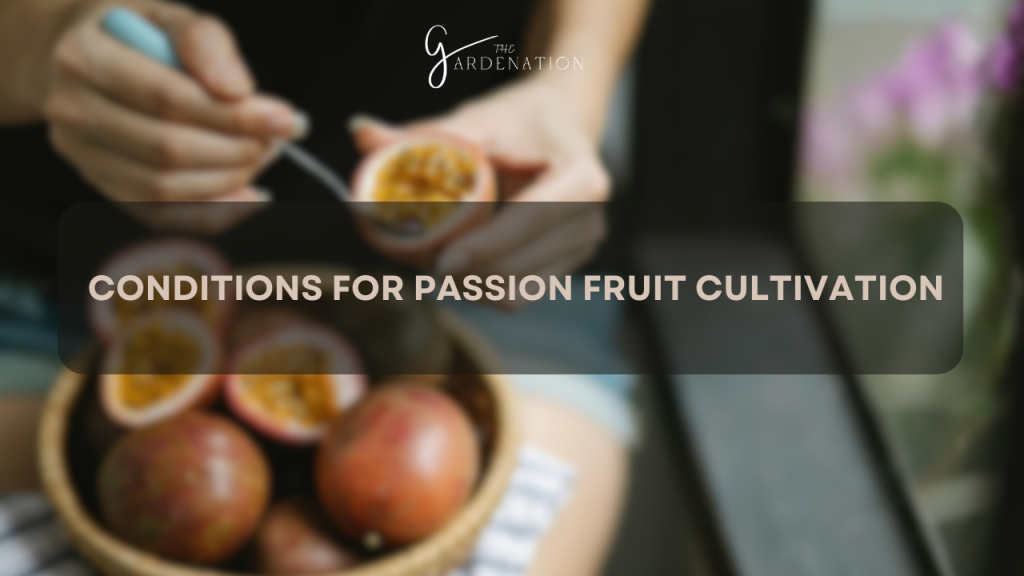
As descendants of tropical ancestors, passion fruit requires reliably warm, protected conditions mimicking ancestral rainforest origins to thrive. Most imported cultivars tolerate brief light frost only after defoliating in winter dormancy when overall temperatures range 40-50°F during cooler months.
Plant sprouted vines after all danger of spring frost passes once ambient temperatures stabilize above 50°F to avoid shocking tender growth. Site plants against heat-reflecting stucco or masonry walls if cultivating in marginal zones like 9B for better outcomes. Passion fruit flourishes best in zones 10-11 with hot summer rainfall concentrating through monsoons ideally when given well-drained yet nutrient rich soils or amended planting beds.
Growth Rate & Training
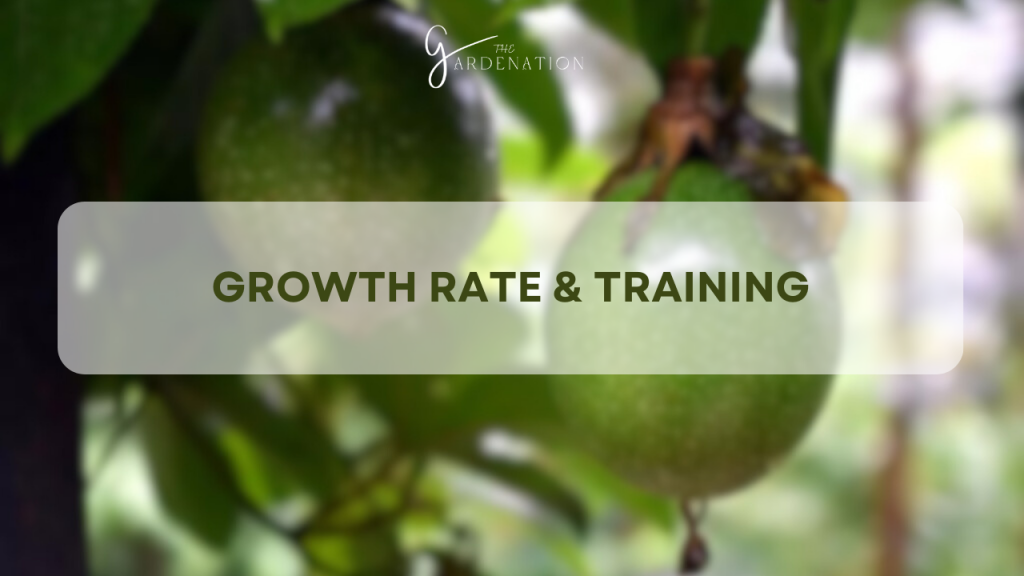
Classified as vigorous evergreen perennial vines, passion fruit grows incredibly rapidly when heat units accumulate quickly through spring and summer. Exceptionally bright light, warm days topping 80°F followed by 70°F+ nights and adequate irrigation fuels astonishing vertical lifts often exceeding over 2 feet monthly in peak seasons. Abundant micronutrients and balanced feeding keeps growth exuberant.
Left unchecked, rampant vertical expansion overtakes available support structures quickly, demanding seasonal pruning. Guide plants along substantial trellises and frames offering spreading room for lateral branch formation through carefully tied guidelines. Allow at least 12-15 feet spans for mature plant width and height with solid anchors.
Alternating between fruitful lateral flowering branches and aggressive upward leaders allows harvesting ease yet avoids overburdening supports leading to collapse after heavy rain or fruit loads. Judicious pruning increases yields, size and sweetness ultimately by managing form early before woody maturity limits options.
Growth Stages of Passion Fruit
1. Germination
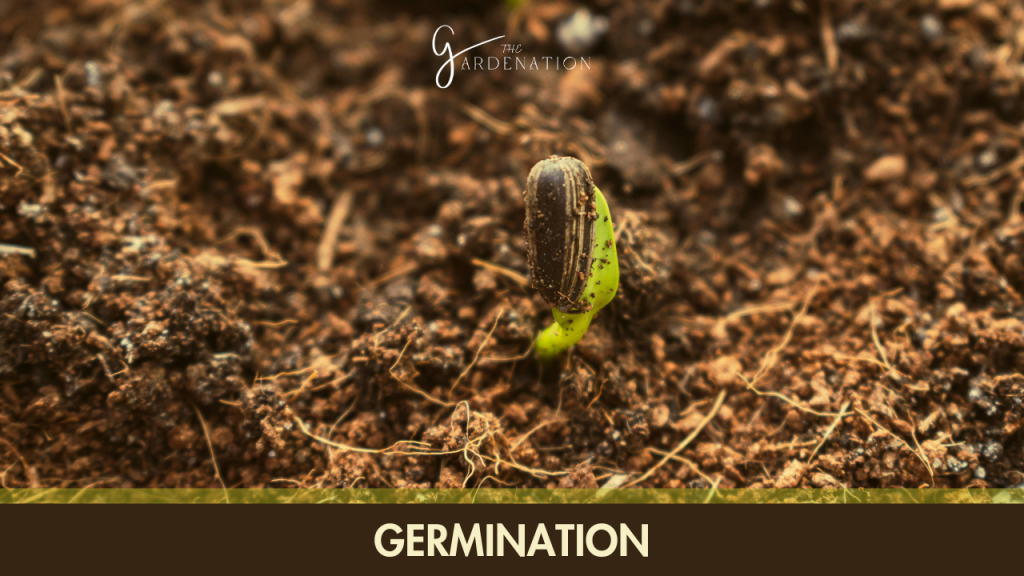
Like most plants, passion fruit cultivation begins with seed planting in starter containers once soil temperatures warm past 60°F, either directly outdoors or indoors before last expected frost dates for transplanting soon after. Wait two weeks after sprouting or when the second set of leaves emerge before repotting young seedlings into larger quarters they will occupy for the rest of this current season before final transplantation outdoors.
2. Seedling Stage

Successfully sprouted passion flower seeds send an emerging radicle anchoring into soil while rising hypocotyls lift embryonic leaves called cotyledons toward sunlight. As cell replication progresses, the first true serrated, dark green adult foliage follows, marking the seedling’s transition into independent photosynthetic growth ending early reliance on nutrients stored within initial seed casings.
Regular watering prevents desiccation during these formative weeks as leaves forge vital substance through light absorption. Shelter tender roots from pests before transplanting later once any frost danger passes into well amended beds for extensive surging outgrowth supporting plentiful blossoms and fruit through maturity. Minimize handling delicate stems during these critical threshold weeks before strength accumulates.
3. Vegetative Establishment Phase
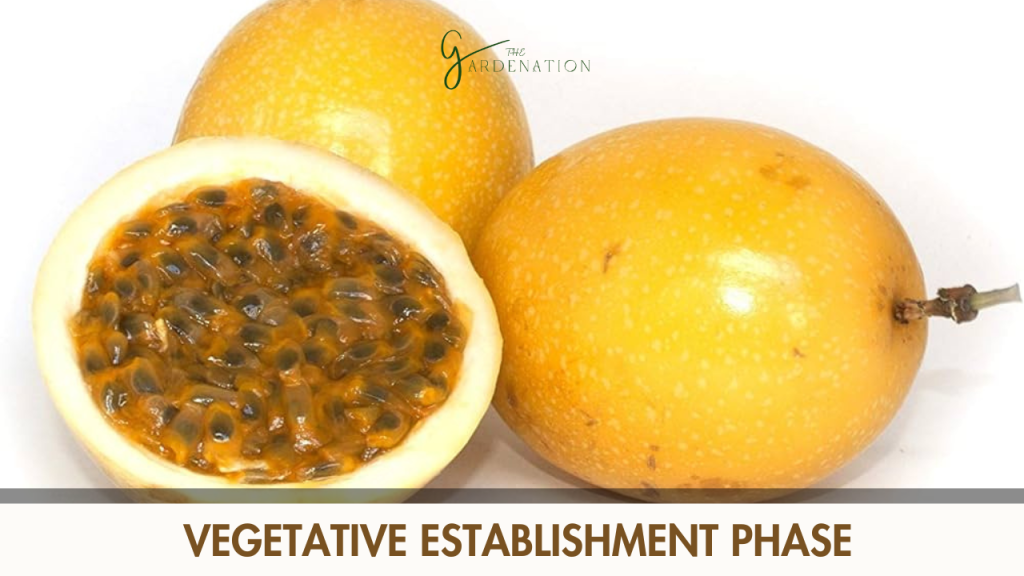
After relocation outdoors, passiflora direct increasing energy into quick root and stem development to maximize light harvesting and anchoring capacities sustaining later flowering and fruit loads. Newly planted vines often allocate resources primarily toward vigorous top growth before slowly transitioning some focus toward reproductive efforts.
Pruning undesired vertical stems channels energies toward desired branching structures that improve ripening and accessibility once fruits set. Monitor overall balanced plant health during this phase regarding irrigation, nutrition and pest management as needed before blooming initiates. Care taken in these months remains vital for ensuring a promising passion fruit journey ahead.
4. Flowering & Pollination
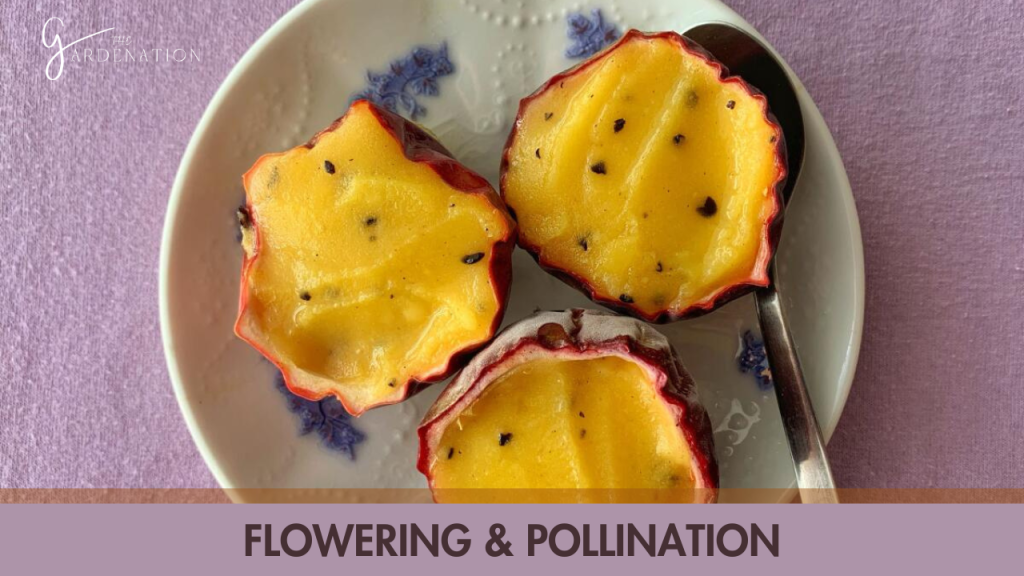
Within the first year once well established, the first showstopping passion flowers emerge displaying unique structures evolved attracting specialist regional pollinators like carpenter bees seeking nectar or perfume components. Blossoms arise from leaf nodes on new growth rather than older wood. Protect these vines from strong wind or cold snaps compromising petals.
Hand pollination via small artist brush transfers vibrant golden pollen between flowers sets significantly more fruits than leaving yields solely to chance visitor traffic. Pollen swiftly wilts post-collection so utilize promptly and liberally distributed about nodes once several blooms emerge. Reliably initiating fruit set this way safeguards outcomes versus uncertain variables.
5. Fruit Production
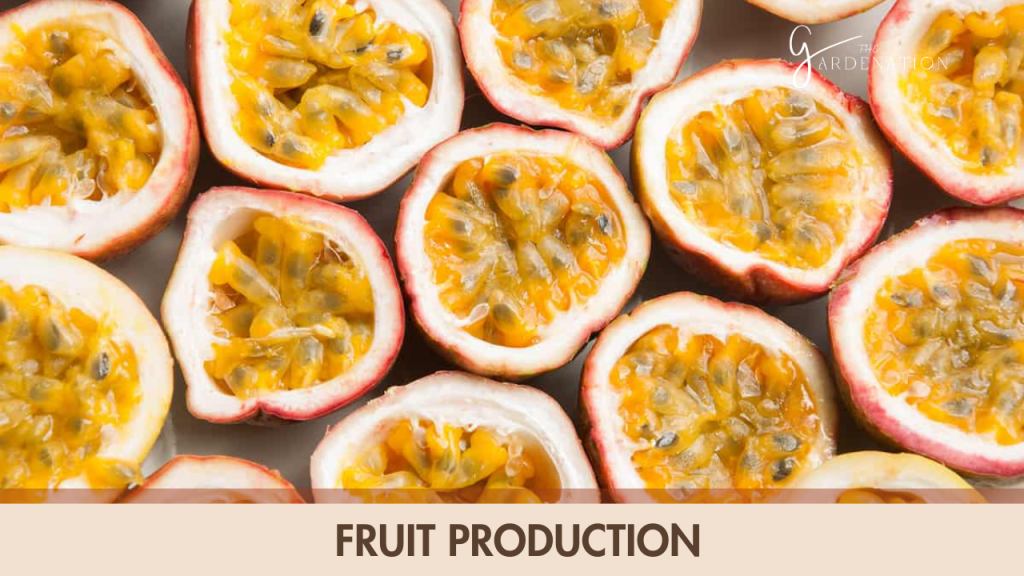
Once successfully fertilized, passion fruits rapidly swell over next two to three months into plump, vibrantly colored egg-shaped fruits. Depending on available sugars and sunlight intensity, passion fruits mature through summer into fall either bright yellow or dusky purple hues. Ripeness becomes abundantly evident as thinning skins wrinkle slightly and subtly drop sheen intensity signaling ideal picking times before interior mucilage deteriorates past peak flavor.
Clip ripened fruits carefully without damaging supportive stems for continual regeneration and harvesting potential. Consume immediately post harvest for premium flavor and texture or store temporarily near 32°F in breathable containers to slow decay. Process excess passion fruit pulp into jam or juice bases for enjoying long term once current fresh eating supplies deplete as backyard yields renew throughout the seasons ahead.
Cultivation FAQs
Are all passion flower species edible?
While several species offer edible fruits theoretically, most lack sufficient sweetness or size for culinary usage. Focus efforts instead on proven P. edulis types for reliable harvestable eating quality rather than experimenting with obscure untested varieties.
Realistically, how long from planting seeds until picking ripe fruits?
Passion fruit often blooms and sets first small harvests within the initial year. However vines need 18-24 months establishing before reaching peak yields at mature size. Have realistic expectations paired with patience and persistent care giving young plants time to revealing their best performance long term once structure supports abundant fruiting capacity season after season.
Conclusion
Reviewing key phases guiding passion fruit’s unique life cycle through seed germination into heavy harvest reveals specialized adaptations these heat-loving vines evolved matching their tropical heritage and pollinator partnerships. By clearly outlining each developmental stage requirements alongside troubleshooting guidance, may this passion fruit primer equip all aspiring home growers in successfully navigating the rhythms of cultivation ultimately overflowing in vivid blossoms and delightful fruiting rewards through purpose and patient perseverance tasting the exotic tropics.


One Comment